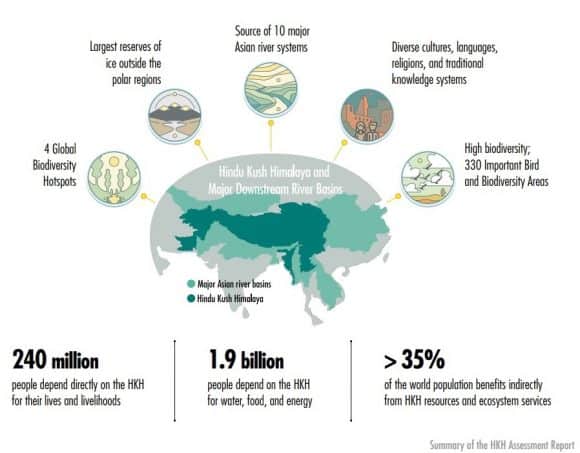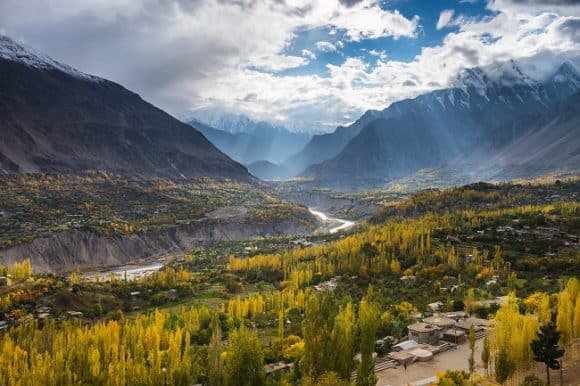By Pallav Purohit, researcher with the IIASA Air Quality and Greenhouse Gases Program
More than 300 million people in Hindu Kush Himalaya-countries still lack basic access to electricity. Pallav Purohit writes about recent research that looked into how the issue of energy poverty in the region can be addressed.
The Hindu Kush Himalayas is one of the largest mountain systems in the world, covering 4.2 million km2 across eight countries: Afghanistan, Bangladesh, Bhutan, China, India, Myanmar, Nepal, and Pakistan. The region is home to the world’s highest peaks, unique cultures, diverse flora and fauna, and a vast reserve of natural resources.
Ensuring access to affordable, reliable, sustainable, and modern energy for all – the UN’s Sustainable Development Goal (SDG) 7 – has however been especially elusive in this region, where energy poverty is shockingly high. About 80% of the population don’t have access to clean energy and depend on biomass – mostly fuelwood – for both cooking and heating. In fact, over 300 million people in Hindu Kush Himalaya-countries still lack basic access to electricity, while vast hydropower potentials remain largely untapped. Although a large percentage of these energy deprived populations live in rural mountain areas that fall far behind the national access rates, mountain-specific energy access data that reflects the realities of mountain energy poverty barely exists.

Source: Wester et al. (2019)
The big challenge in this regard is to simultaneously address the issues of energy poverty, energy security, and climate change while attaining multiple SDGs. The growing sectoral interdependencies in energy, climate, water, and food make it crucial for policymakers to understand cross-sectoral policy linkages and their effects at multiple scales. In our research, we critically examined the diverse aspects of the energy outlook of the Hindu Kush Himalayas, including demand-and-supply patterns; national policies, programmes, and institutions; emerging challenges and opportunities; and possible transformational pathways for sustainable energy.
Our recently published results show that the region can attain energy security by tapping into the full potential of hydropower and other renewables. Success, however, will critically depend on removing policy-, institutional-, financial-, and capacity barriers that now perpetuate energy poverty and vulnerability in mountain communities. Measures to enhance energy supply have had less than satisfactory results because of low prioritization and a failure to address the challenges of remoteness and fragility, while inadequate data and analyses are a major barrier to designing context specific interventions.
In the majority of Hindu Kush Himalaya-countries, existing national policy frameworks currently primarily focus on electrification for household lighting, with limited attention paid to energy for clean cooking and heating. A coherent mountain-specific policy framework therefore needs to be well integrated in national development strategies and translated into action. Quantitative targets and quality specifications of alternative energy options based on an explicit recognition of the full costs and benefits of each option, should be the basis for designing policies and prioritizing actions and investments. In this regard, a high-level, empowered, regional mechanism should be established to strengthen regional energy trade and cooperation, with a focus on prioritizing the use of locally available energy resources.

© Kriangkraiwut Boonlom | Dreamstime.com
Some countries in the region have scaled up off-grid initiatives that are globally recognized as successful. We however found that the special challenges faced by mountain communities – especially in terms of economies of scale, inaccessibility, fragility, marginality, access to infrastructure and resources, poverty levels, and capability gaps – thwart the large-scale replication of several best practice innovative business models and off-grid renewable energy solutions that are making inroads into some Hindu Kush Himalayan countries.
This further highlights an urgent need to establish supportive policy, legal, and institutional frameworks as well as innovations in mountain-specific technology and financing. In addition, enhanced multi-stakeholder capacity building at all levels will be needed for the upscaling of successful energy programs in off-grid mountain areas.
Finally, it is important to note that sustainable energy transition is a shared responsibility. To accelerate progress and make it meaningful, all key stakeholders must work together towards a sustainable energy transition. The world needs to engage with the Hindu Kush Himalayas to define an ambitious new energy vision: one that involves building an inclusive green society and economy, with mountain communities enjoying modern, affordable, reliable, and sustainable energy to improve their lives and the environment.
References:
[1] Dhakal S, Srivastava L, Sharma B, Palit D, Mainali B, Nepal R, Purohit P, Goswami A, et al. (2019). Meeting Future Energy Needs in the Hindu Kush Himalaya. In: The Hindu Kush Himalaya Assessment. pp. 167-207 Cham, Switzerland: Springer. ISBN 978-3-319-92287-4 [pure.iiasa.ac.at/15666]
[2] Wester P, Mishra A, Mukherji A, Shrestha AB (2019). The Hindu Kush Himalaya Assessment: Mountains, Climate Change, Sustainability and People. Cham, Switzerland: Springer. ISBN 978-3-319-92287-4.
Note: This article gives the views of the author, and not the position of the Nexus blog, nor of the International Institute for Applied Systems Analysis.

You must be logged in to post a comment.